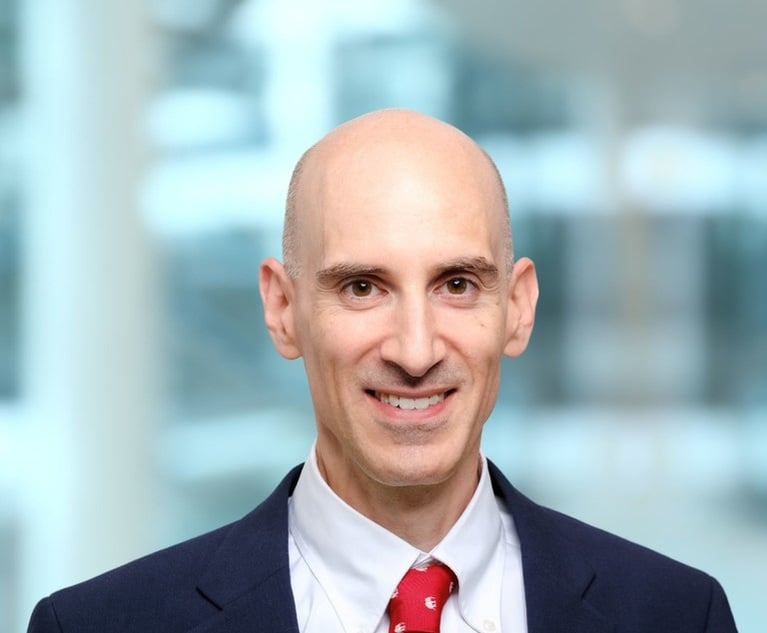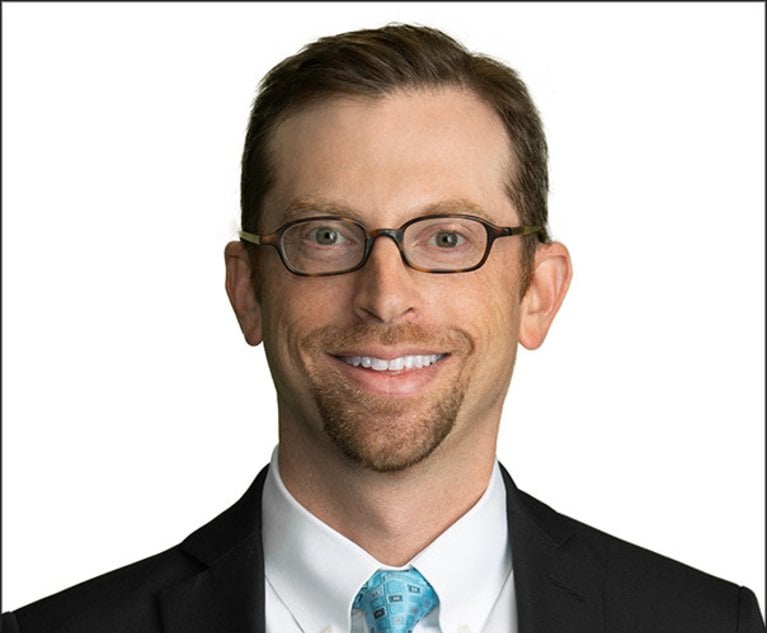New Regulations Demand Due Process for Campus Sexual Misconduct Cases
An analysis of some of the more groundbreaking and controversial changes in the new Title IX regulations, including the authors' opinions on the regulations' likely successes and shortcomings ahead of their implementation on Aug. 14, 2020.
June 24, 2020 at 09:56 AM
9 minute read

Title IX of the Education Amendments of 1972 is a federal statute proscribing gender discrimination in educational programs. But the 37-word statute makes no mention of "sexual harassment." For years, the Department of Education (DOE) has issued piecemeal guidance on how schools should address sexual harassment—a form of gender discrimination—pursuant to Title IX but these guidance documents were not legally binding. On May 6, 2020, pursuant to its rulemaking authority granted by Congress, DOE issued final regulations advising our nation's schools about when they must respond to reports of sexual harassment and what that response must look like.
During the 60-day notice and comment period, DOE received over 124,000 comments, some of which voiced concerns about deviating from the status quo citing safety concerns and decreased reporting, while others believed campus tribunals were being unfairly administered. Placed in an unenviable position, DOE sought to strike a balance by integrating the bedrock principles of due process found within our legal system while also providing continuous support to complainants. It is impossible to address all aspects of the final regulations, which span over 2,000 pages, so this article merely highlights DOE's most noteworthy changes.
Definition of Sexual Harassment
The final regulations define "sexual harassment" as one or more of the following: (i) quid pro quo harassment; (ii) unwelcome conduct that is "severe, pervasive and objectively offensive"; or (iii) sexual assault, dating violence, domestic violence or stalking. 34 C.F.R. §106.30 (citations throughout beginning with "§" reference CFR provisions to be published on July 1, 2020). Unwelcome conduct should be measured by a reasonable person standard. Id. The Department refers to the definitions in the Clery Act and the Violence Against Women Act to achieve uniformity with existing federal statutes. Id.
DOE has received harsh criticism for what victims' advocates perceive as a "narrowed" definition of sexual harassment that does not square with how the same term is defined under Title VII caselaw, i.e., "severe, pervasive or objectively offensive." Victims' advocates argue that DOE's definition will make campuses unsafe, curtail the number of reports, and promote a hostile environment.
But DOE's definition of "sexual harassment" is grounded in U.S. Supreme Court precedent. In Davis v. Monroe County Board of Education, 526 U.S. 629, 651-52 (1999), the Court declined to adopt Title VII's standard in light of the maturity level of students versus adults in the workplace. Following the Court's reasoning, DOE believes that the Davis standard is sufficient in K-12 settings and allows the free exchange of ideas among college students. Nondiscrimination on the Basis of Sex in Education Programs or Activities Receiving Federal Financial Assistance, 85 Fed. Reg. 97 at 30143, 30149 (May 19, 2020) (hereinafter "Federal Register"). Moreover, DOE's definition of "sexual harassment" expands the Davis standard by making quid pro quo harassment, sexual assault, dating violence, domestic violence, and stalking per se "severe, pervasive and objectively offensive," thereby triggering a school's duty to respond.
Standard of Evidence
Schools may select either the preponderance of the evidence or clear and convincing evidence standard to adjudicate sexual harassment complaints, as long as the same standard is used in faculty and student cases alike. §106.45(b)(1)(vii); §106.45(b)(7)(i). Under prior DOE guidance, schools were required to adjudicate sexual misconduct cases under the preponderance of the evidence standard. U.S. Dep't of Educ., Office for Civil Rights, Dear Colleague Letter (Apr. 4, 2011). Schools are trained to understand "preponderance of the evidence" to mean "fifty percent plus a feather" or whether it is more likely than not that the violation occurred.
Some critics claim that allowing schools to use the clear and convincing standard will make campuses less safe because less respondents will be found responsible under this higher standard of evidence, while other critics argue that a higher standard of "beyond a reasonable doubt" is more appropriate for what is otherwise considered criminal conduct. Given the non-criminal nature of these proceedings, DOE believes that the only appropriate standards are preponderance of the evidence or clear and convincing evidence, and either standard may be utilized to reach fair and reliable outcomes. Federal Register at 30385.
Scope of Jurisdiction
Schools are only obligated to respond to sexual harassment occurring within education programs or activities. §106.30. Whether behavior falls within an education program or activity is a fact-based analysis that hinges on whether the school exercised substantial control over the respondent and the context in which the behavior occurs. §106.44. Clearly, fraternity and sorority houses fall within a university's "substantial control." §106.44.
But despite calls for further clarification on this topic, the final regulations are surprisingly bereft of detail when addressing what constitutes "substantial control," notwithstanding the Final Regulations' staggering length. DOE merely states that it "would require a fact-specific analysis." Federal Register at 30203. DOE's failure to provide guidelines for analyzing facts is disappointing considering the amount of public scrutiny on the scope of jurisdiction. Regardless, the final regulations represent the floor, not the ceiling, and schools are still free to extend their jurisdiction beyond what Title IX requires. §106.45(b)(3).
Rights of the Parties
The final regulations significantly bolster due process protections. In the past, respondents were at the mercy of schools, prosecuted in an adversarial system without the resources or expertise to adequately defend themselves. Both parties are now entitled to written notice of allegations including sufficient details known at the time and with sufficient time to prepare a response before any initial interview. §106.45(b)(2). Sufficient details include the identity of the complainant and factual allegations, such as the date and location of the alleged misconduct. Id. Combined with the presumption of innocence, the right to an advisor, a specified burden of proof, and the school's requirement to gather both inculpatory and exculpatory evidence, respondents are now guaranteed protections that will help ensure the outcome of any hearing is fair and reliable. §106.45(b)(1)(iv); §106.45(b)(5)(iv); §106.45(b)(5)(i).
Victims' advocates lament the increased protections for respondents, but complainants have also benefitted from the final regulations. The final regulations require schools to offer supportive measures to complainants regardless of whether a formal complaint is filed. §106.44(a). Even if there is a determination of non-responsibility, schools are permitted to continue providing supportive measures.
Complainants may participate in a formal grievance process, stop the process at any time for any reason or, contrary to prior guidance restraints, engage in mediation. §106.45; §106.45(b)(3)(ii); §106.45(b)(9). Finally, with an equal right to an advisor and the ability to review and respond to the evidence, complainants will have a strong voice throughout the grievance process.
Live Hearing and Cross-Examination
DOE's ban on the single-investigator model ensures that Title IX complaints will be resolved by a fact-finder who was not involved in the collection of evidence. §106.45(b)(7)(i). Due process advocates support the prohibition of the single-investigator model, noting that it is unrealistic to expect an individual to fairly review their own investigative work. Federal Register at 30366.
DOE agrees with this viewpoint and notes that combining the investigatory and adjudicatory aspects of Title IX proceedings may decrease the accuracy of disciplinary determinations as a result of confirmation bias and other prejudices. Id. at 30367. At the request of either party, the live hearing can be held with the parties in different rooms. §106.45(b)(6)(i).
While cross-examination must be allowed directly, orally, and in real-time, all questioning must be performed by advisors rather than the parties themselves. Id. The scope of cross-examination is limited to relevant questions, and inquiries regarding sexual history are severely restricted. Id.; Federal Register at 30366. If a party or witness refuses to participate in cross-examination during a proceeding, the fact-finder cannot rely on any statement made by that party or witness in rendering a decision. §106.45(b)(6)(i). When a party does not have an advisor present at the hearing, the final regulations mandate that schools provide, without fee or charge, an advisor to conduct cross-examination. Id. This advisor, however, is not required to be an attorney. Id.
DOE was not convinced by the many commenters who asserted that cross-examination will lead to inequality based on financial resources. Federal Register at 30322. Rather, the expectation is that trained fact-finders will make decisions based on evidence rather than solely on an advisor's skill at cross-examination. Id. This is a rather bold assumption. Cross-examination can be a very useful tool in damaging witness credibility. Undoubtedly, a trained attorney will wield that tool more skillfully than a school-appointed advisor. Still, the benefits of affording the parties the ability to cross-examine witnesses outweigh the potential drawbacks.
Title IX matters at institutions of higher education often hinge on witness accounts of the events in question. The final regulations will enable schools to make all-important credibility determinations based on in-person testimony appropriately checked by cross-examination. These modifications benefit all parties involved in the Title IX process and safeguard the ideals of fairness frequently touted by educational institutions but are too often disregarded to the detriment of their students and employees.
As legal practitioners, we believe the final regulations, while not perfect, represent a step in the right direction for Title IX.
Kimberly C. Lau is a partner, James E. Figliozzi is counsel and Branden P. Lynn is an associate in Warshaw Burstein's college discipline/Title IX practice.
This content has been archived. It is available through our partners, LexisNexis® and Bloomberg Law.
To view this content, please continue to their sites.
Not a Lexis Subscriber?
Subscribe Now
Not a Bloomberg Law Subscriber?
Subscribe Now
NOT FOR REPRINT
© 2025 ALM Global, LLC, All Rights Reserved. Request academic re-use from www.copyright.com. All other uses, submit a request to [email protected]. For more information visit Asset & Logo Licensing.
You Might Like
View All
Fusion Voting and Its Impact on the Upcoming Election

Trending Stories
- 1Bribery Case Against Former Lt. Gov. Brian Benjamin Is Dropped
- 2‘Extremely Disturbing’: AI Firms Face Class Action by ‘Taskers’ Exposed to Traumatic Content
- 3State Appeals Court Revives BraunHagey Lawsuit Alleging $4.2M Unlawful Wire to China
- 4Invoking Trump, AG Bonta Reminds Lawyers of Duties to Noncitizens in Plea Dealing
- 522-Count Indictment Is Just the Start of SCOTUSBlog Atty's Legal Problems, Experts Say
Who Got The Work
J. Brugh Lower of Gibbons has entered an appearance for industrial equipment supplier Devco Corporation in a pending trademark infringement lawsuit. The suit, accusing the defendant of selling knock-off Graco products, was filed Dec. 18 in New Jersey District Court by Rivkin Radler on behalf of Graco Inc. and Graco Minnesota. The case, assigned to U.S. District Judge Zahid N. Quraishi, is 3:24-cv-11294, Graco Inc. et al v. Devco Corporation.
Who Got The Work
Rebecca Maller-Stein and Kent A. Yalowitz of Arnold & Porter Kaye Scholer have entered their appearances for Hanaco Venture Capital and its executives, Lior Prosor and David Frankel, in a pending securities lawsuit. The action, filed on Dec. 24 in New York Southern District Court by Zell, Aron & Co. on behalf of Goldeneye Advisors, accuses the defendants of negligently and fraudulently managing the plaintiff's $1 million investment. The case, assigned to U.S. District Judge Vernon S. Broderick, is 1:24-cv-09918, Goldeneye Advisors, LLC v. Hanaco Venture Capital, Ltd. et al.
Who Got The Work
Attorneys from A&O Shearman has stepped in as defense counsel for Toronto-Dominion Bank and other defendants in a pending securities class action. The suit, filed Dec. 11 in New York Southern District Court by Bleichmar Fonti & Auld, accuses the defendants of concealing the bank's 'pervasive' deficiencies in regards to its compliance with the Bank Secrecy Act and the quality of its anti-money laundering controls. The case, assigned to U.S. District Judge Arun Subramanian, is 1:24-cv-09445, Gonzalez v. The Toronto-Dominion Bank et al.
Who Got The Work
Crown Castle International, a Pennsylvania company providing shared communications infrastructure, has turned to Luke D. Wolf of Gordon Rees Scully Mansukhani to fend off a pending breach-of-contract lawsuit. The court action, filed Nov. 25 in Michigan Eastern District Court by Hooper Hathaway PC on behalf of The Town Residences LLC, accuses Crown Castle of failing to transfer approximately $30,000 in utility payments from T-Mobile in breach of a roof-top lease and assignment agreement. The case, assigned to U.S. District Judge Susan K. Declercq, is 2:24-cv-13131, The Town Residences LLC v. T-Mobile US, Inc. et al.
Who Got The Work
Wilfred P. Coronato and Daniel M. Schwartz of McCarter & English have stepped in as defense counsel to Electrolux Home Products Inc. in a pending product liability lawsuit. The court action, filed Nov. 26 in New York Eastern District Court by Poulos Lopiccolo PC and Nagel Rice LLP on behalf of David Stern, alleges that the defendant's refrigerators’ drawers and shelving repeatedly break and fall apart within months after purchase. The case, assigned to U.S. District Judge Joan M. Azrack, is 2:24-cv-08204, Stern v. Electrolux Home Products, Inc.
Featured Firms
Law Offices of Gary Martin Hays & Associates, P.C.
(470) 294-1674
Law Offices of Mark E. Salomone
(857) 444-6468
Smith & Hassler
(713) 739-1250








